As a little kid, I gained an interest in coin collecting from my father, who has been collecting since he was a teenager. One of my uncles has also had a big hand in this passion as he has also been collecting since he was a kid. These days I mostly collect coins from countries I visit, which is harder with so many countries in Europe switching to the Euro. This is why I was thrilled to realize that we have quite a nice collection of coins/medallions/etc. here.
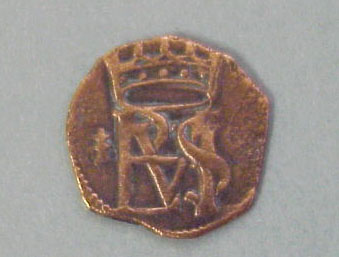
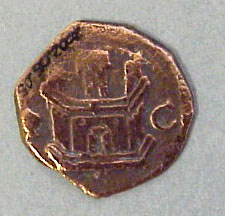
These first two photos show an 1 Maravedis coin, ca 1558-1576, from Cuenca, Spain. On one side is a crowned monogram for King Philip II. On the other is the raised image of a castle with towers and the letter “C”. It looks like there might be a chalice to the left of the castle, but it is difficult to tell.

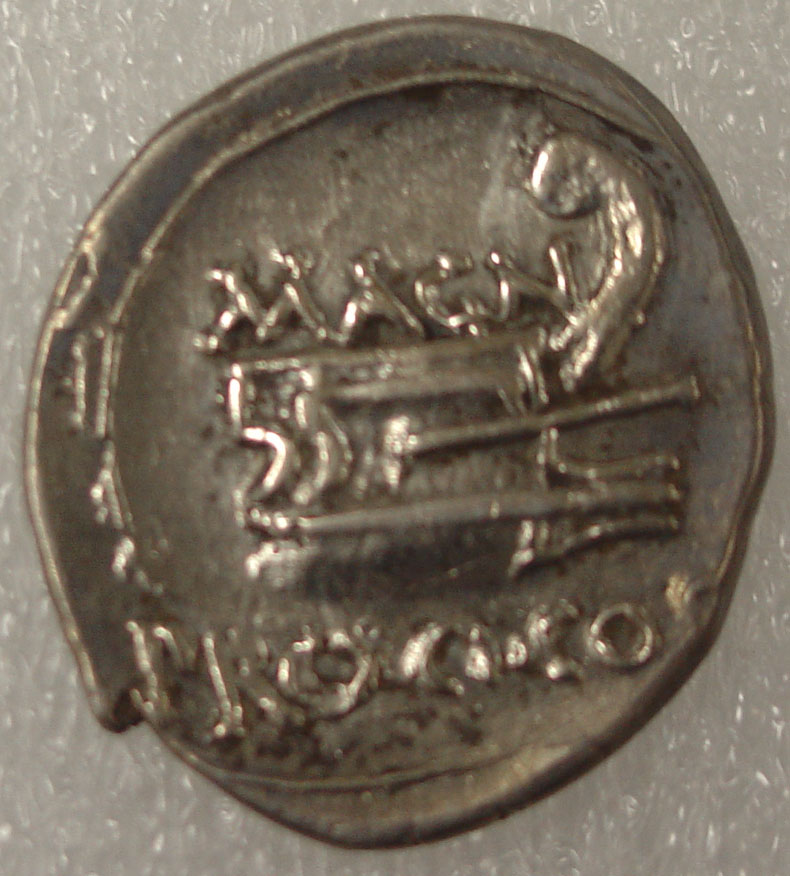
This is a Denarius coin featuring Pompey the Great from 49-48BC. Pompey is probably best known for his alliance and then break and war with Caesar, who was trying to take over the Roman Republic. Pompey fled to Egypt where he was assassinated and his head presented to Caesar. I’m particularly fascinated by Roman history, especially this time period, so it’s very exciting to get to work with something from that time.
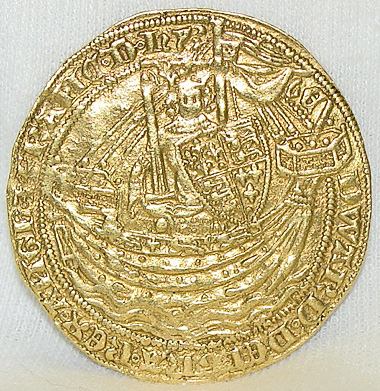
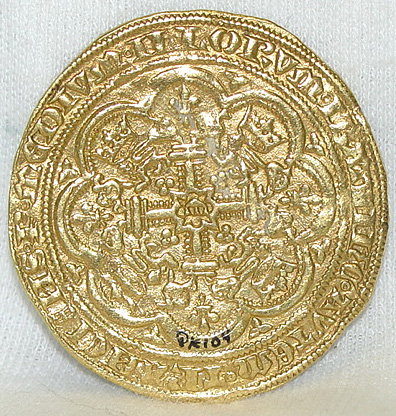
The above is a gold coin (ca 1361-1369) commemorating the Battle of Sluys between King Edward III and Philip of Valois. The central image shows a figure of the king holding a sword and shield standing on a ship. Waves flow under the ship and text in Latin surrounds the images. The reverse shows a cross surrounded by crowns and again surrounded by Latin text at the outer perimeter. It is very beautiful and in pretty amazing shape considering how old it is.
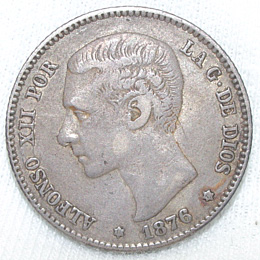
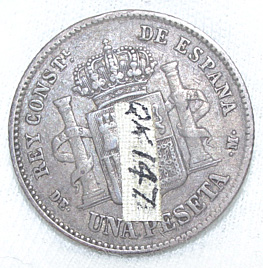
This last coin is a Spanish silver one Peseta (1876) from the Almirante Oquendo which was destroyed by the American Fleet off Santiago, July 3, 1898. The obverse shows the left facing profile of Alfonso XII while the reverse bears the crowned Spanish coat of arms between pillars. The Almirante Oquendo was part of Admiral Cervera’s squadron during the Battle of Santiago and was one of six vessels that was sunk or stranded along a stretch of coastline twenty miles west of Santiago. And just as a side note, we no longer put numbers on our objects like you see on this one. We have to number every object in the collection, but we do so discreetly and in a way that can be easily reversed.
Of course this is only a taste of our coin collection, but I’ll save more for a later date.